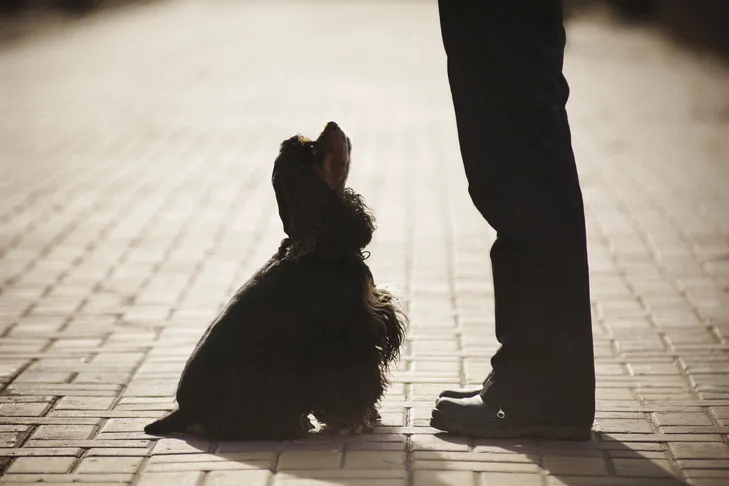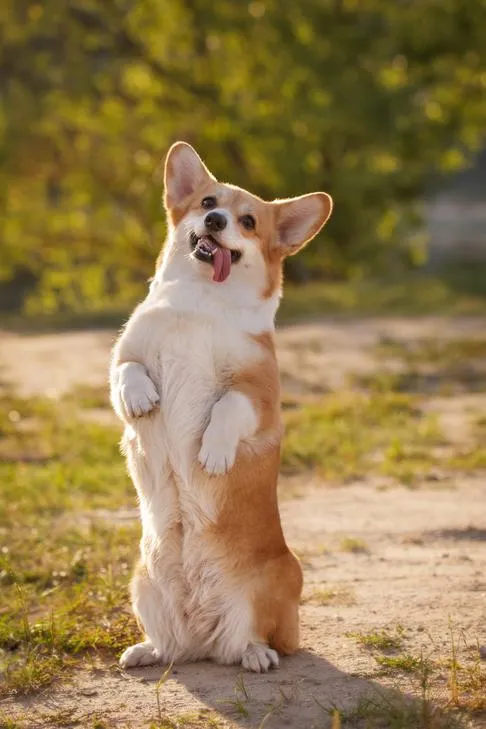Teaching your dog to sit is one of the most fundamental and valuable commands you can impart. Not only does a reliable “sit” provide a calm alternative to unwanted behaviors like jumping or restless pacing, but it also forms the cornerstone for many other advanced tricks and obedience commands. For many dog owners, however, achieving a consistent sit can be a challenge. Dogs might pop back up too quickly, or even refuse to sit altogether. If you’re looking for an effective strategy on how to get my dog to stop pulling and develop a well-behaved companion, mastering the “sit” command is your essential first step. This guide will walk you through proven techniques to establish a solid sit from your canine friend, along with helpful tips and a fun advanced trick.
Steps to Teach Your Dog to Sit Effectively
The most widely accepted and successful method for teaching a dog to sit involves “lure and reward” training, combined with positive reinforcement. This technique uses a treat to guide your dog into the desired position, immediately rewarding them for compliance. Using a clicker can also enhance the training by marking the exact moment your dog performs the action correctly, creating a clear association between the behavior and the reward. For optimal results, ensure your training sessions occur in a quiet, distraction-free environment where your dog feels relaxed and focused.
 A beagle dog sitting calmly inside its open crate during a training session.
A beagle dog sitting calmly inside its open crate during a training session.
Follow these detailed steps to effectively lure your dog into a sitting position:
- Start with your dog standing. Hold a high-value treat close to your dog’s nose, ensuring they are aware of its presence.
- Slowly move the treat. Lift the treat upwards, moving it slightly back over their head and towards their rear end. As your dog’s nose follows the treat, their head will tilt up, naturally causing their hindquarters to lower to the ground.
- Mark and reward the sit. The instant your dog’s rear touches the ground, mark the behavior with a clicker (if using) or enthusiastic verbal praise like “Yes!” or “Good sit!” Immediately offer them the treat as a reward.
- Reset for the next repetition. To encourage your dog to stand again, either take a few steps back and call them, or gently toss another treat a short distance away. Once they are standing, repeat the first three steps.
- Fade the lure. After several successful repetitions where your dog reliably follows the treat into a sit, it’s time to transition. Use an empty hand to perform the same luring motion, but present the treat from your other hand once they sit. This empty-hand motion will eventually become your visual hand signal for “sit.”
- Add the verbal cue. Once your dog consistently sits in response to your empty hand signal, introduce the verbal command. Say “Sit” clearly and calmly just before you give the hand signal. Over time, your dog will associate the word “sit” with the action and respond to the verbal cue alone, even without the visual prompt.
Tips for Effective Sit Training
When teaching your dog to sit, patience and proper technique are crucial. One common mistake trainers make is physically pushing a dog’s hind end down. This can be intimidating, confusing, and even uncomfortable for your dog, potentially creating a negative association with the command. Instead, always rely on luring or capturing techniques, which are positive and dog-friendly. Always remember to deliver the treat while your dog is still in the sitting position. If you delay or inadvertently lure them into a stand before rewarding, you risk teaching them to pop out of the sit quickly, undermining your goal of a sustained sit.
 A Cocker Spaniel sitting obediently in front of its owner on command, demonstrating good posture.
A Cocker Spaniel sitting obediently in front of its owner on command, demonstrating good posture.
If your dog is struggling to grasp the concept, consider luring them from a “down” position. Start with your dog lying on the ground, then gradually shape their behavior towards a sit. Hold a treat at their nose and slowly raise it, clicking and treating as soon as they lift their head. Continue to raise the treat in small increments, rewarding each slight elevation of their chest. With each repetition, they will lift themselves higher until they naturally move into a sitting position. This gradual approach can be particularly helpful for dogs who are less confident or have difficulty coordinating their movements. Additionally, addressing other behavioral challenges like how to correct dog pulling on leash can also contribute to a more focused and responsive dog during training sessions.
Another powerful technique is “capturing” the sit. This means whenever your dog sits spontaneously on their own, you immediately mark the behavior with a click and/or praise, and then reward them. This teaches your dog that sitting is a rewarding action, even when not cued. Over time, your dog will begin to offer sits more frequently, anticipating a reward. Once this happens, you can introduce your verbal cue (“sit”) just before they are about to sit, further reinforcing the command.
Making “Sit” a Default Behavior
A “default behavior” is a choice your dog makes to perform a certain action without being prompted by a cue. Imagine how wonderful it would be if your dog chose to sit calmly instead of greeting guests by jumping or running wildly around the house. You can strongly influence your dog’s decision-making process by consistently rewarding the “sit” behavior. The more you incorporate “sit” into your daily training and interactions, the more likely your dog will be to offer it voluntarily in various situations. This concept applies to other learned behaviors too, much like how consistency helps with teaching dog to poop outside.
To make sitting a default behavior, actively reward any spontaneous sits. If your dog walks up to you and sits patiently, reward them. If they sit while you’re preparing their meal, reward that too. Initially, you might need to cue them to sit in these scenarios, but with enough repetition, they will start offering the sit on their own. Don’t take these voluntary sits for granted! Always acknowledge and reward your dog with whatever they value – a tasty treat, a quick game of tug, or a toss of their favorite ball. Through this consistent positive reinforcement, your dog will learn that sitting is a polite and effective way to ask for things they want, making it their natural way of saying “please.” This approach also reinforces general good manners, similar to reinforcing good potty habits through methods like how can i teach my dog to poop outside.
Advanced Trick: Teaching “Sit Pretty”
Once your dog has mastered the basic “sit” command, you can move on to teaching the adorable trick known as “sit pretty.” In this charming pose, your dog sits on their haunches with their front paws lifted in the air, resembling a begging position. It’s not only irresistibly cute but also surprisingly easy to train once your dog has a solid foundation in sitting.
 A Pembroke Welsh Corgi sitting up on its hind legs in a "sit pretty" pose outdoors, looking attentive.
A Pembroke Welsh Corgi sitting up on its hind legs in a "sit pretty" pose outdoors, looking attentive.
Follow these steps to teach your dog the “sit pretty” trick:
- Ask your dog to sit. Ensure they are in a stable sitting position before proceeding.
- Lure upwards. Hold a treat close to your dog’s nose and slowly lift it straight up and slightly back, encouraging them to rise onto their haunches. As soon as their front paws lift off the ground, even slightly, mark the behavior (clicker or praise) and reward them with the treat.
- Increase height gradually. Repeat the luring process, but this time lift the treat higher, requiring your dog to stretch more to reach it. Continue to build height in small increments until your dog consistently achieves the proper “sit pretty” position, balancing on their hind legs.
- Fade the lure. Once your dog reliably performs “sit pretty” with the treat lure, begin using an empty hand to make the luring motion. This hand gesture will become your visual signal for the trick. Continue to reward them generously for successful attempts.
- Add the verbal cue. When your dog responds consistently to the hand signal, introduce a verbal cue such as “Sit Pretty” or “Beg” just before you give the hand signal. With consistent practice, they will learn to associate the words with the action and perform the trick on verbal command alone. This process of reinforcing specific actions helps in mastering complex behaviors, much like reinforcing positive habits in retraining dog to poop outside.
If your dog struggles with balance initially, you can offer your forearm as a temporary resting place for their front paws. This provides support until they develop the core strength and confidence to hold themselves up. With consistent practice, your dog will not only develop a rock-solid “sit” but also delight you and others with this adorable advanced trick.
Conclusion
Teaching your dog to sit is a foundational behavior that enriches your relationship, enhances their manners, and paves the way for more advanced training. By using positive reinforcement, consistent luring, and rewarding spontaneous sits, you can transform “sit” into a reliable command and even a default behavior. Remember to be patient, keep training sessions positive and engaging, and always reward your dog for their efforts. With these techniques, you’ll equip your dog with an essential life skill and strengthen the bond you share, making them a well-mannered and cherished member of your family.
